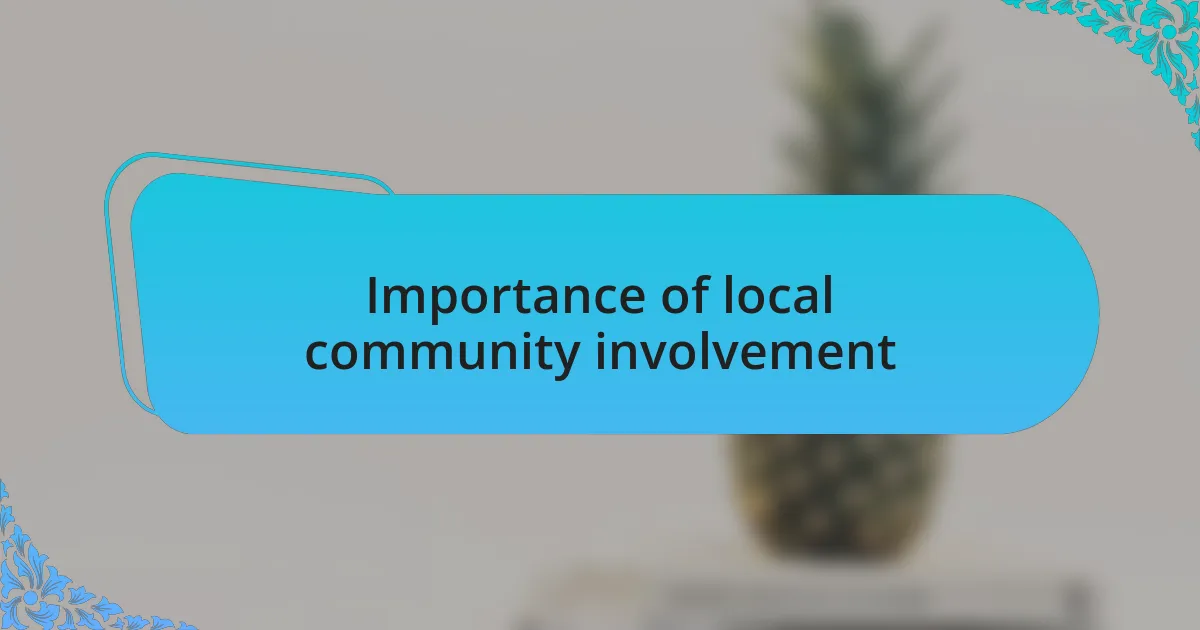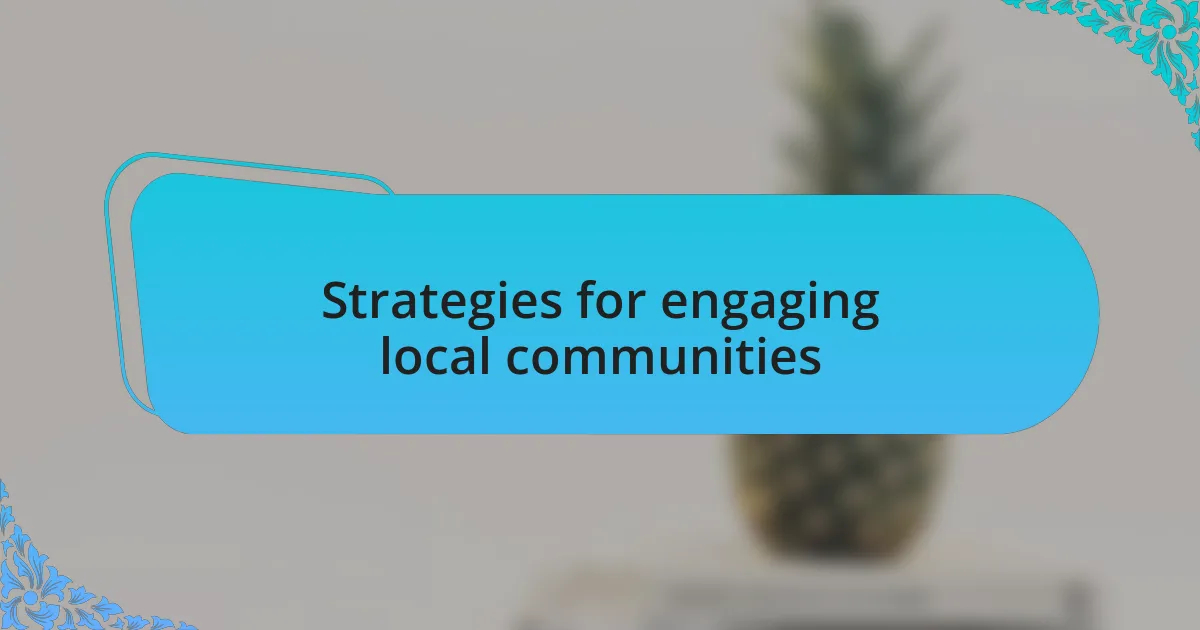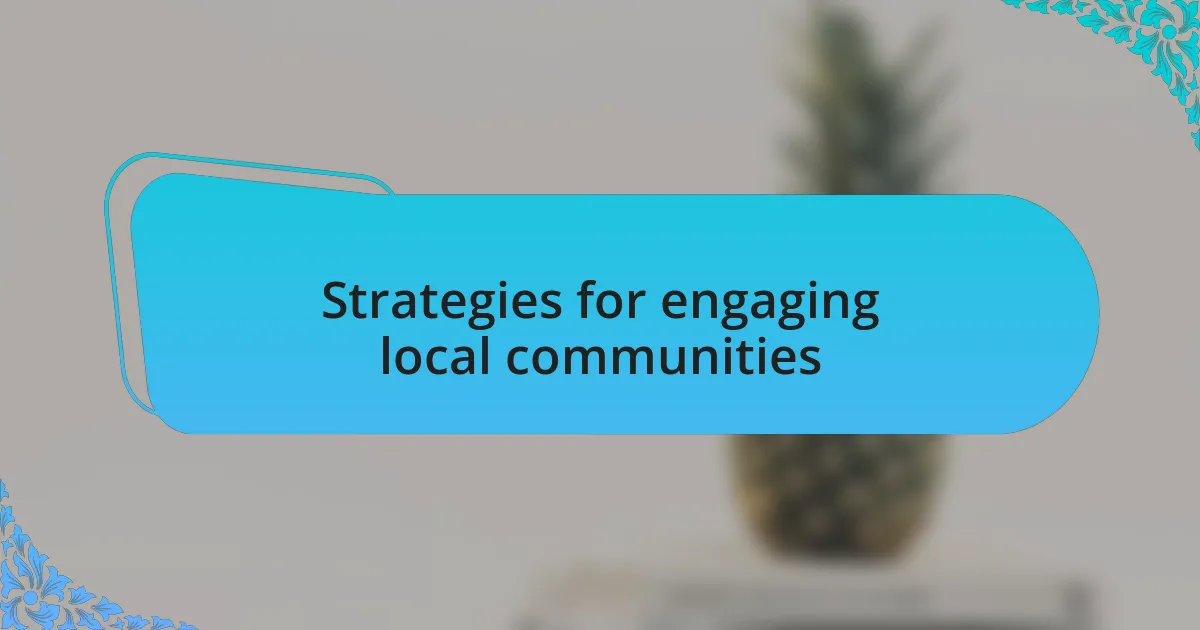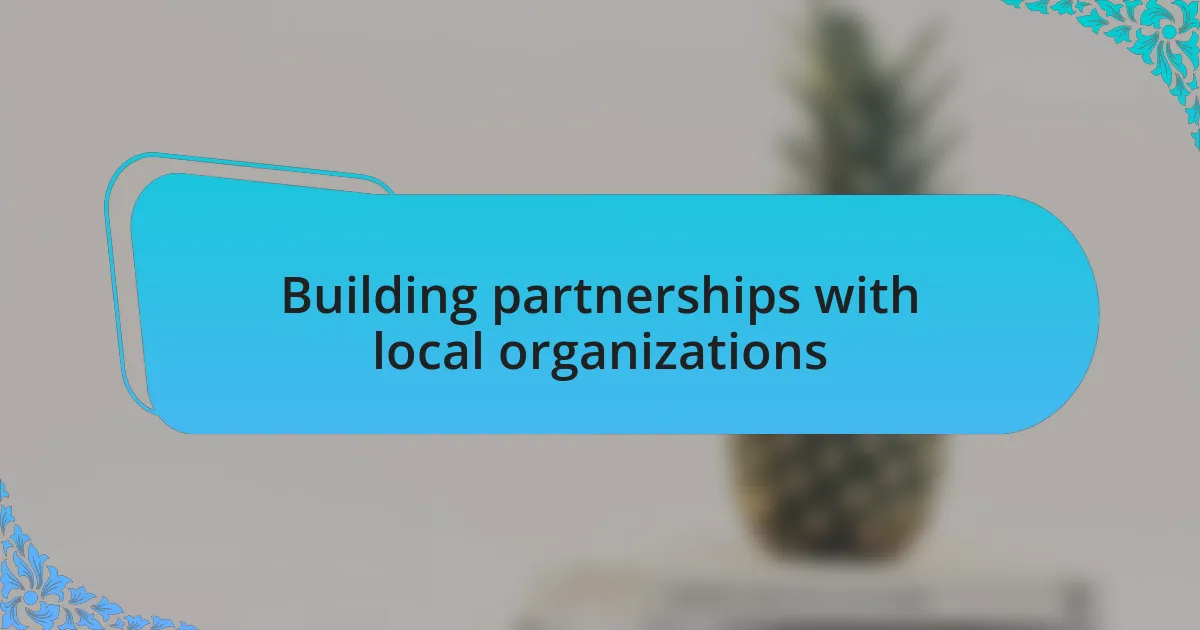Key takeaways:
- A literary festival unites authors, readers, and the community, fostering meaningful connections and celebrating diverse voices.
- Local community involvement in festivals enhances belonging and pride, while breaking down barriers and nurturing relationships among residents.
- Effective engagement strategies include hosting workshops, involving local schools, and leveraging social media to amplify community narratives.
- Building partnerships with local organizations and businesses enriches festivals and enhances their cultural impact within the community.

What is a literary festival
A literary festival is a vibrant celebration of literature that brings together authors, readers, and the community. It often features readings, panel discussions, and workshops, where attendees have the chance to engage with their favorite writers. I still remember attending my first festival; the excitement of hearing a beloved author read their work live was overwhelming and unforgettable.
These events create a space for meaningful conversations about stories and ideas that resonate with our lives. For instance, I once participated in a workshop that transformed my perspective on storytelling—there’s something magical about sharing those moments with fellow book lovers. Have you ever found that one conversation at a festival sparked a new passion for writing or reading?
At its core, a literary festival is more than just a gathering; it’s a community-building experience. It empowers local voices by showcasing regional authors alongside renowned figures, fostering connections that enrich both readers and writers alike. I often think about how these connections often lead to lifelong friendships, all sparked by a shared love of literature.

Importance of local community involvement
When local communities engage in literary festivals, they foster a sense of belonging and pride. I remember a neighborhood festival in my town where local schools collaborated on a storytelling project, showcasing young talent. It brought students together and instilled a sense of accomplishment that lasted well beyond the event.
Community involvement also creates a unique platform for diverse voices. I once met a retired teacher who shared her poetry at an open mic night. Listening to her stories, filled with life experiences, reminded me how important it is to amplify those local narratives that often go unheard. Isn’t it fascinating how each voice adds a colorful thread to the fabric of our community?
Moreover, such involvement nurtures relationships among residents, breaking down barriers and sparking friendship. During a recent festival, I noticed how locals rallied around a shared passion for literature, leading to book clubs forming right there on the spot. Can you recall a moment when a shared interest led to an unexpected connection? These instances highlight how literary festivals can transform not just individual experiences, but entire communities.

Strategies for engaging local communities

Strategies for engaging local communities
One effective strategy I’ve seen is hosting workshops led by local authors and artists. I remember attending a community art workshop where participants collaborated on a mural inspired by literary themes. The energy was infectious, as people of all ages contributed their ideas, bringing the project to life. It’s incredible how these hands-on experiences spark creativity and foster connections among community members. Have you ever felt that thrill of creating something together?
Another approach is to integrate local schools directly into festival planning. In my experience, when students are involved in decision-making—like selecting themes or speakers—they feel a vested interest in the event. I recall a festival where a group of high school students created an engaging promotional video. Their excitement was palpable, and that enthusiasm translated into a larger turnout for the event. Isn’t it powerful to think how empowering young voices can lead to unprecedented community engagement?
Lastly, leveraging social media platforms to share local stories can boost community involvement significantly. When I saw a neighborhood literary festival use Instagram to highlight residents’ personal stories, it sparked a wonderful dialogue among the locals. People began sharing their own experiences and memories related to literature, creating a sense of unity and anticipation leading up to the event. Doesn’t it feel rewarding when social platforms serve as a bridge between your community’s past and its literary aspirations?

Building partnerships with local organizations
Building partnerships with local organizations can truly enhance the fabric of a literary festival. I remember collaborating with a local library for a series of author readings. Their space, with its warm, inviting atmosphere, not only attracted book lovers but also encouraged families to engage together. Have you ever felt the magic that happens when people come together in a place filled with stories?
Partnering with community centers can also amplify outreach efforts. I once participated in a festival that worked closely with a youth center, where teens helped organize spoken word events. Their fresh perspectives and boundless energy breathed new life into our planning process. Isn’t it amazing how the enthusiasm of youth can inspire diverse programming and attract a wider audience?
Engaging local businesses is another vital aspect of forging these partnerships. I’ve witnessed how a nearby coffee shop came on board as a sponsor, helping us create a cozy ambiance for book discussions. This synergy not only boosted their visibility but also fostered a supportive environment for literary lovers to gather. How gratifying is it to see local enterprises thrive while enriching the community’s cultural landscape?

Measuring community impact at festivals
Measuring the impact of a literary festival on the community can be both enlightening and challenging. I recall a festival I attended where organizers implemented feedback forms for attendees. This simple tool revealed not just attendance numbers but also heartfelt stories about how the festival sparked conversations among neighbors who had never met before. Isn’t it fascinating to think about how literature can bridge gaps and foster connections?
Another essential aspect of measuring impact is analyzing participation in workshops and events. At one festival, I noted a significant increase in turnout for family-oriented activities, and this encouraged us to expand those offerings. Witnessing parents and children together, exploring creativity through writing, warmed my heart. How could we not celebrate the joy of nurturing a new generation of readers and writers?
In addition to direct feedback, evaluating social media engagement can provide insights into the festival’s reach and resonance. During one festival, I observed a spike in online discussions around featured authors and panel topics. This digital buzz not only extended our community beyond the physical event but also reflected how literature can ignite passion and dialogue. Isn’t it inspiring to see how words spread far and wide, fostering a vibrant literary culture?